A Galaxy Zoo: Photos From NASA's WISE Telescope
WISE Galaxy Zoo
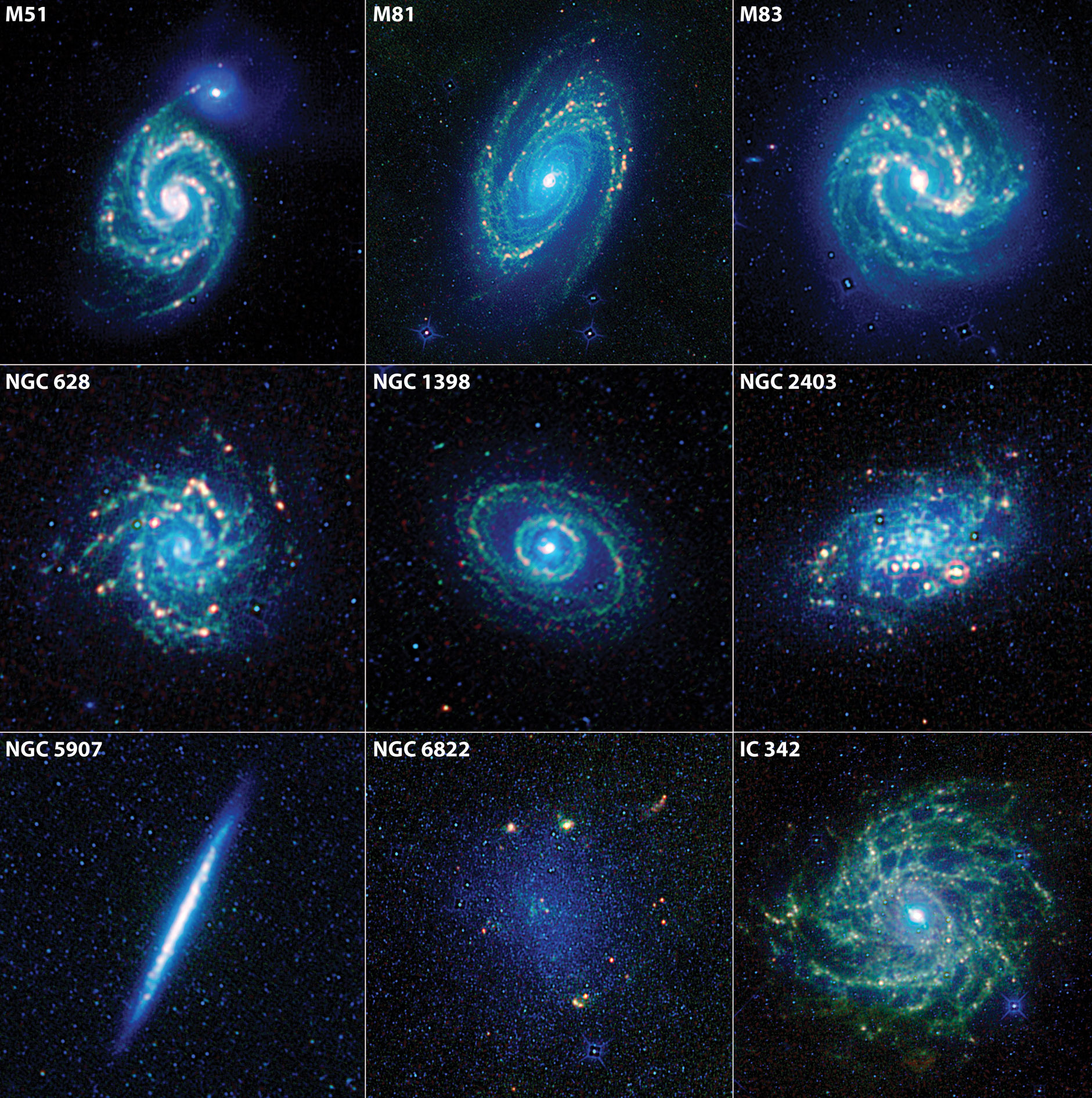
A colorful new collection of galaxies from NASA's Wide-field Infrared Survey Explorer, or WISE, mission reveal a spectacular menagerie of galaxies during its prolific 3-year mission that ended in Feb. 2011. The showcase, released in May 2011 by NASA, shows several galaxy types, from elegant grand design spirals to more patchy flocculent spirals, while others have roundish centers or stretched central bars.
All of these images were recorded in infrared light that is invisible to human eyes. Light with the shortest wavelength appears blue while the longest wavelengths appear red. The oldest stars appear blue, while pockets of newly formed stars have yellow or reddish hues. Take a tour of these individual galaxies in this gallery, starting with the famed Whirlpool Galaxy ...
The Whirlpool Galaxy, or Messier 51 (M51)
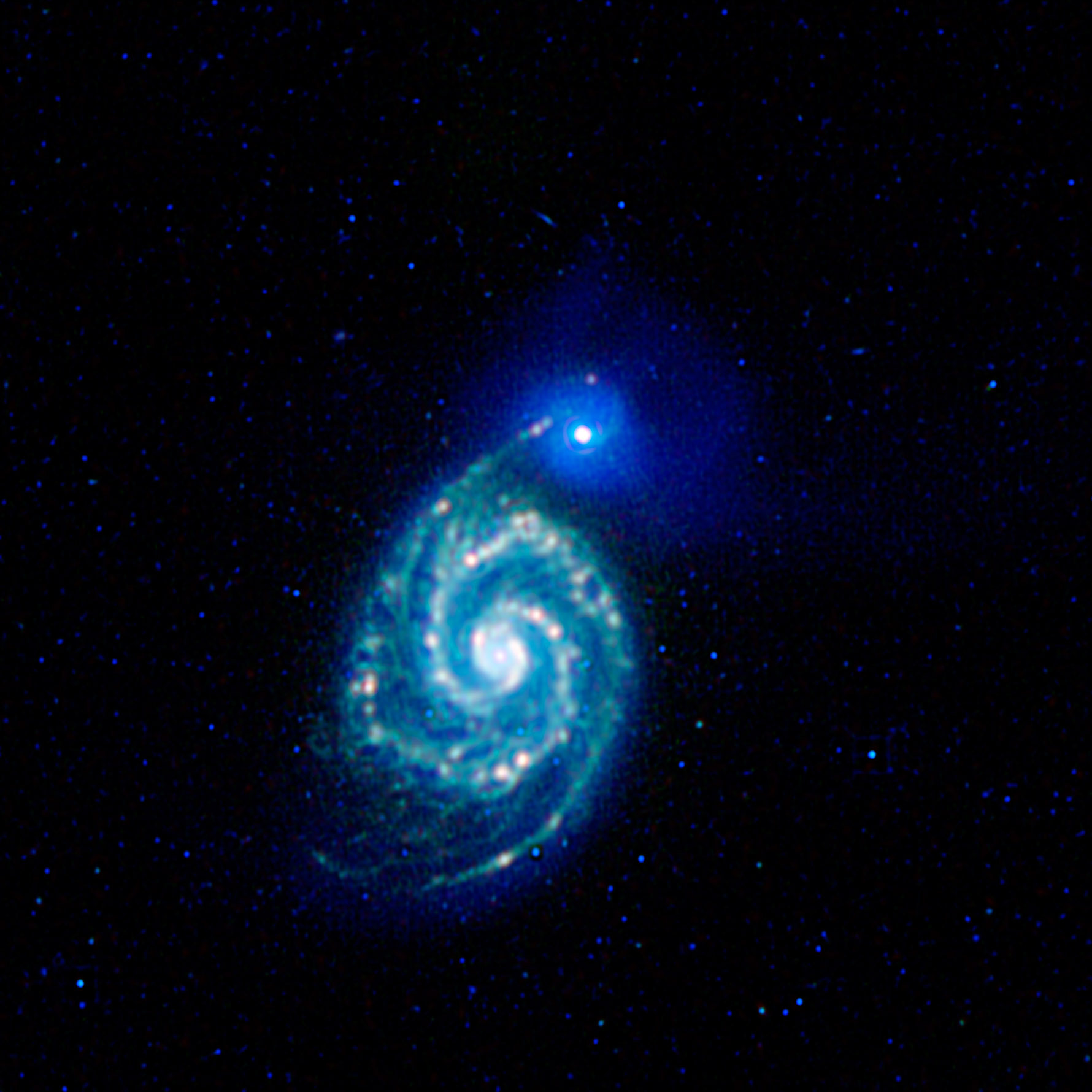
The Whirlpool Galaxy, known by astronomers as M51, is a spectacular "grand design spiral" - galaxies with well-defined spiral arms. Astronomers think the gravitational tug of M51's smaller companion, the a dwarf galaxy NGC 5195, helped shape M51's arms. M51 is also known as "The Lord Ross Galaxy," after the 1840s astronomer who first studied its spiral structure. It is located 25 million light-years away in the constellation Canes Venatici, and is 81,000 light-years across.
Bode's Galaxy, or Messier 81 (M81)
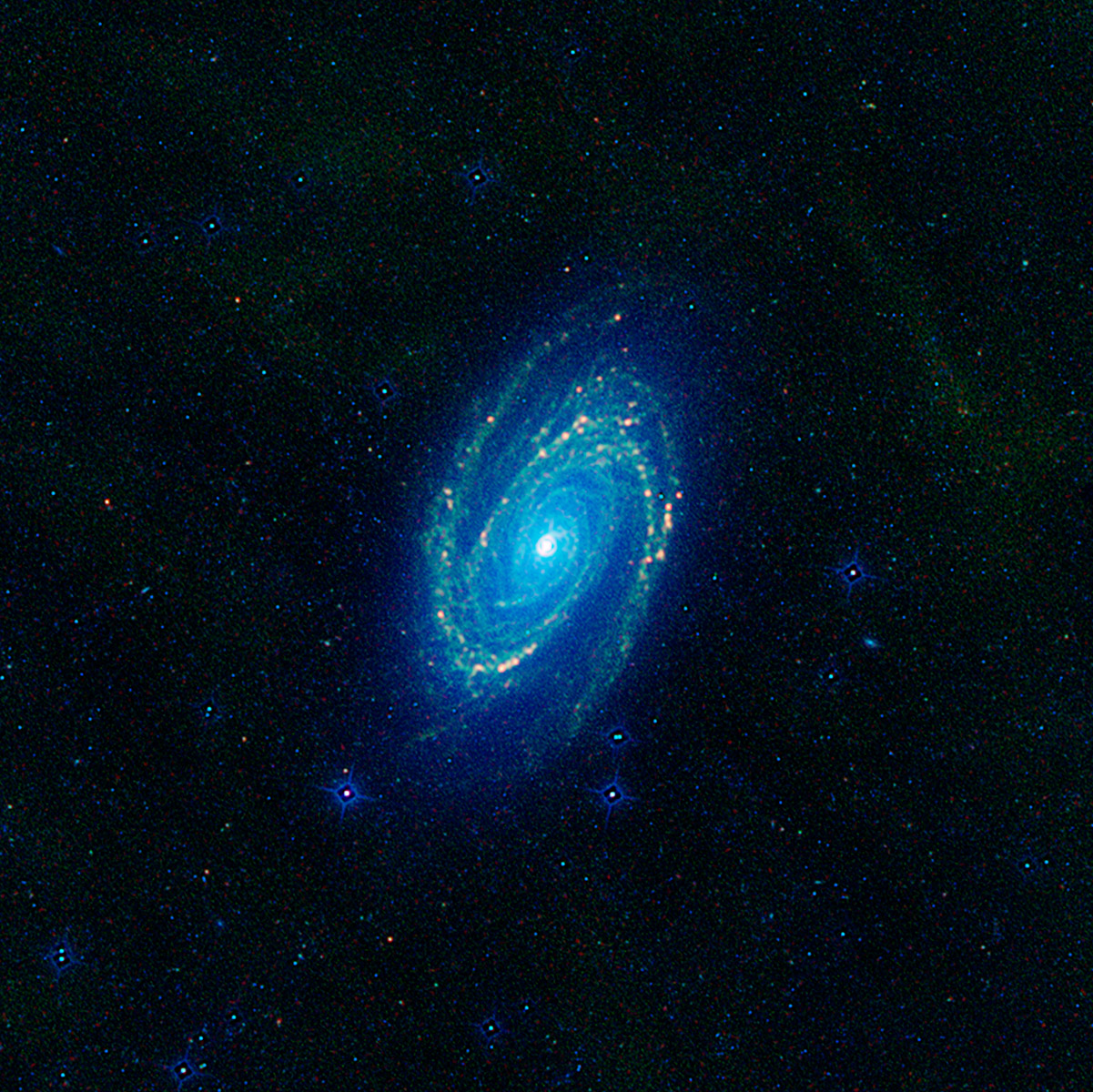
Bode's Galaxy, or M81, is another grand design spiral galaxy with pronounced arms spiraling into its core. NASA's WISE telescope image highlights areas where gas and dust have been compressed in the arms, leading to new star formation. This compression has been enhanced by the galaxy's interaction with a partner, the galaxy Messier 82 (not pictured), which is bursting with new stars and known as a "starburst." M81 is 12 million light-years away in the constellation Ursa Major, and 94,000 light-years across.
Southern Pinwheel Galaxy, or Messier 83 (M83)
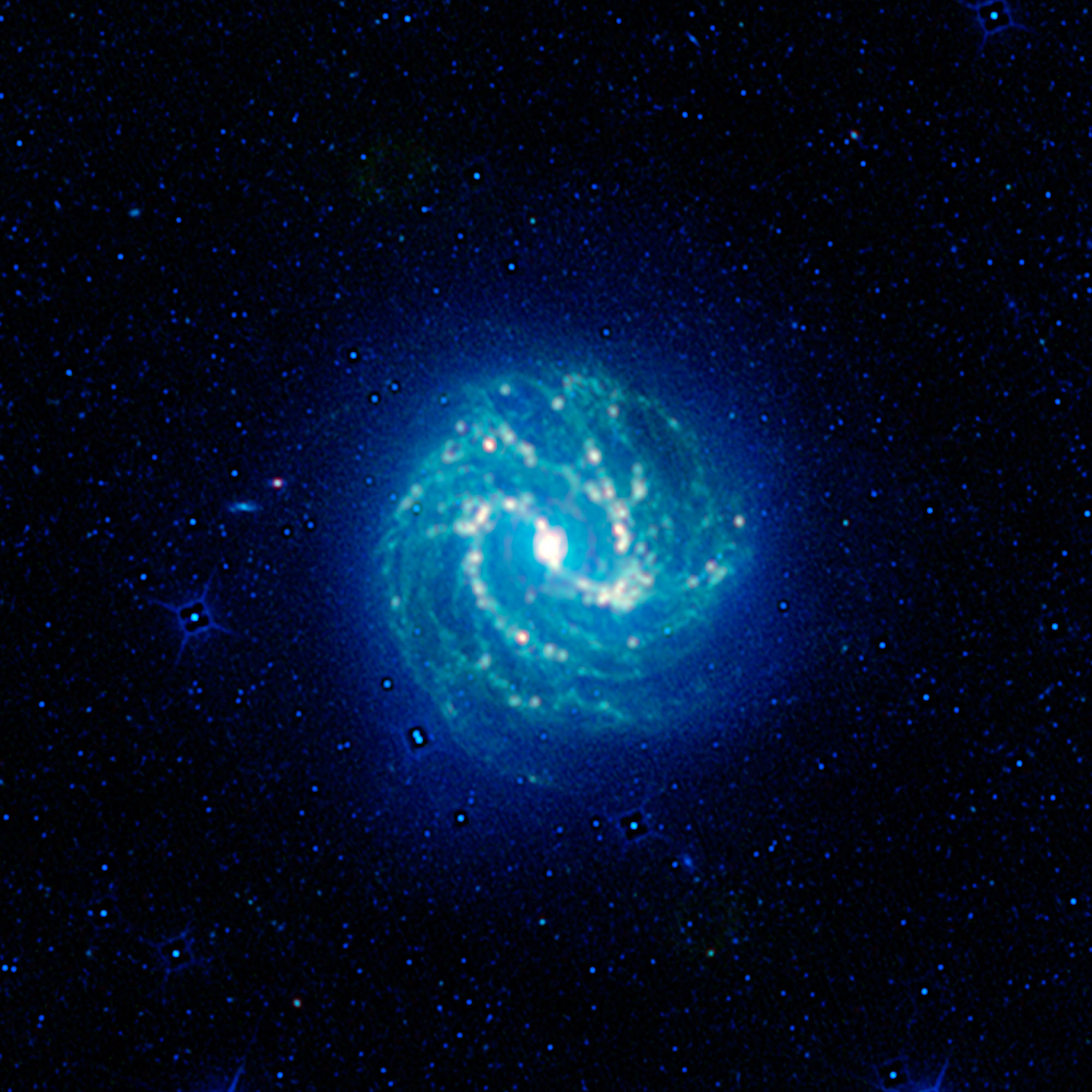
At about 55,500 light-years across, the Southern Pinwheel Galaxy (called M83) is a bit more than half the size of our Milky Way, but it has a similar overall structure. Like the Milky Way, most of M83's stars, dust, and gas lie in a thin disk decorated with grand spiral arms. This galaxy is classified as a barred spiral because, in addition to a central bulge of stars, it has a central bar-shaped region of stars. It is 15 million light-years away in the constellation Hydra.
NGC 628, or Messier 74 (M74)
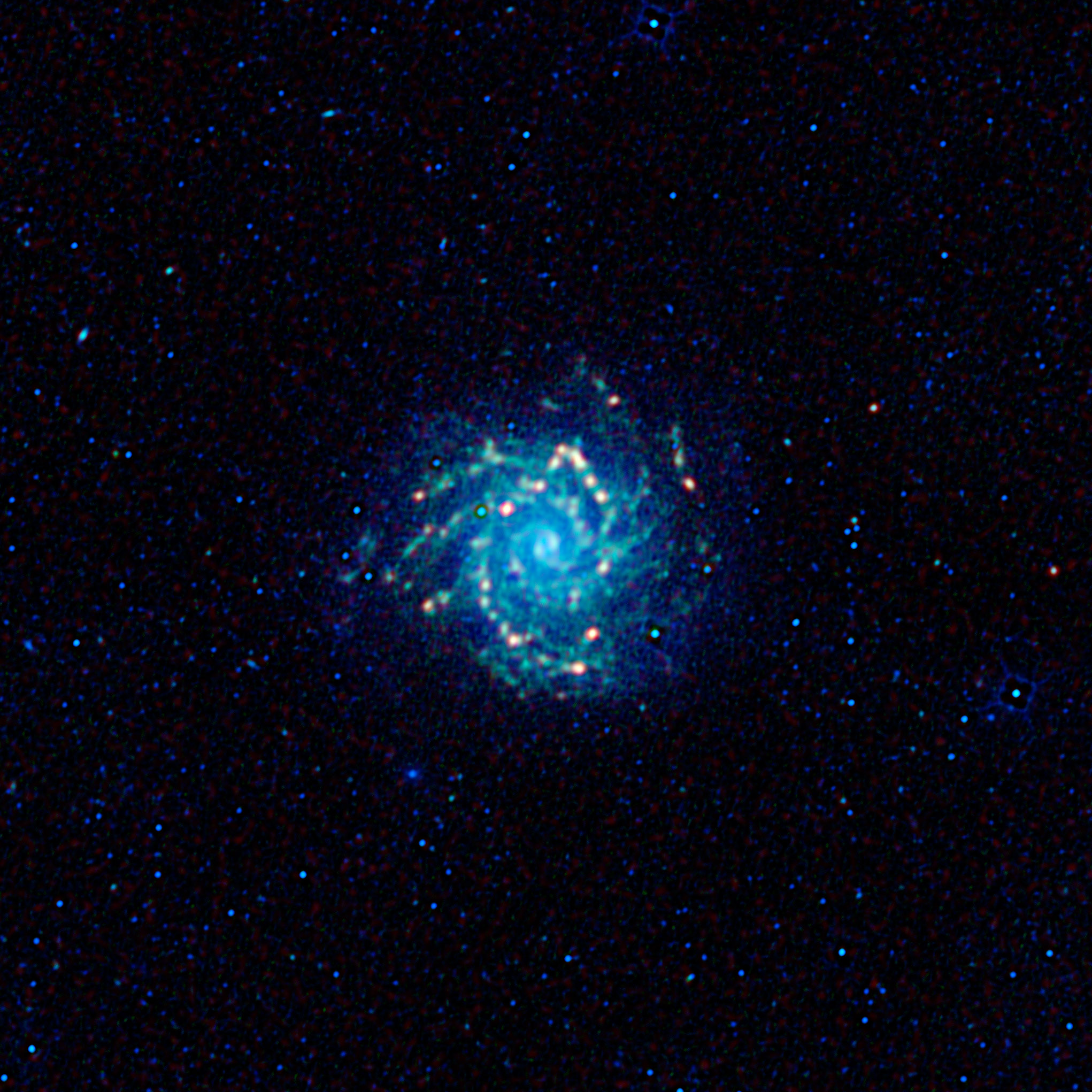
Some astronomers call the grand design spiral Messier 74 the "perfect spiral" because of its exceptional symmetry. The galaxy's core is suspected to have a black hole with a mass equal to 10,000 suns. It is one of only a handful of known black holes with masses intermediate between the relatively smaller stellar ones, which form from collapsing stars, and supermassive black holes millions of times more massive than the sun. Supermassive black holes are more typically found at the centers of galaxies. Messier 74 is located between 24.5 and 36 million light-years away in the constellation Pisces, and is 100,000 light-years across.
NGC 1398
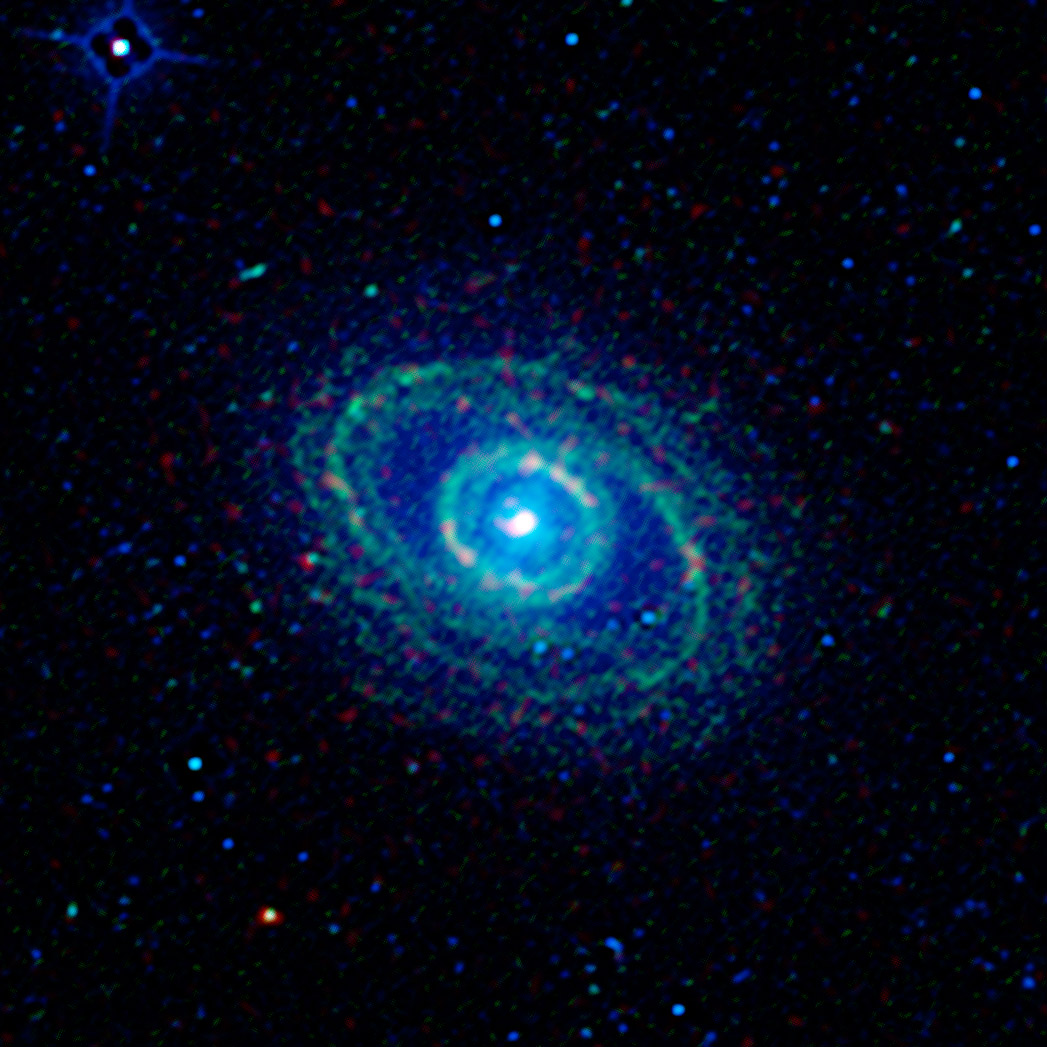
This barred spiral has a dense inner ring that surrounds a bright, central core. The ring is actually two spiral arms that are closed in on each other. In contrast to its well-defined center, this galaxy's arms are patchy, or flocculent. It is tilted about 43 degrees away from an edge-on orientation, and has a diameter of 135,000 light-years. NGC 1398 is 65 million light-years away in the Fornax constellation, and is part of the Fornax galaxy cluster.
Get the Space.com Newsletter
Breaking space news, the latest updates on rocket launches, skywatching events and more!
Splinter or Knife Edge Galaxy, or NGC 5907

This galaxy's face is angled about 90 degrees from our view, so it appears edge-on and thin as a splinter, or knife. It was discovered by the astronomer William Herschel in 1788. There is a large complex of stellar streams surrounding the galaxy, which can't be seen in the WISE telescope image. These are the torn-up shreds of smaller galaxies that were consumed. The faint green hue seen in the WISE composite is due to the "halo" of old stars that encircles the central region of the galaxy. The Splinter Galaxy is about 53 million light-years away in the constellation Draco, and is nearly 200,000 light-years across.
NGC 2403
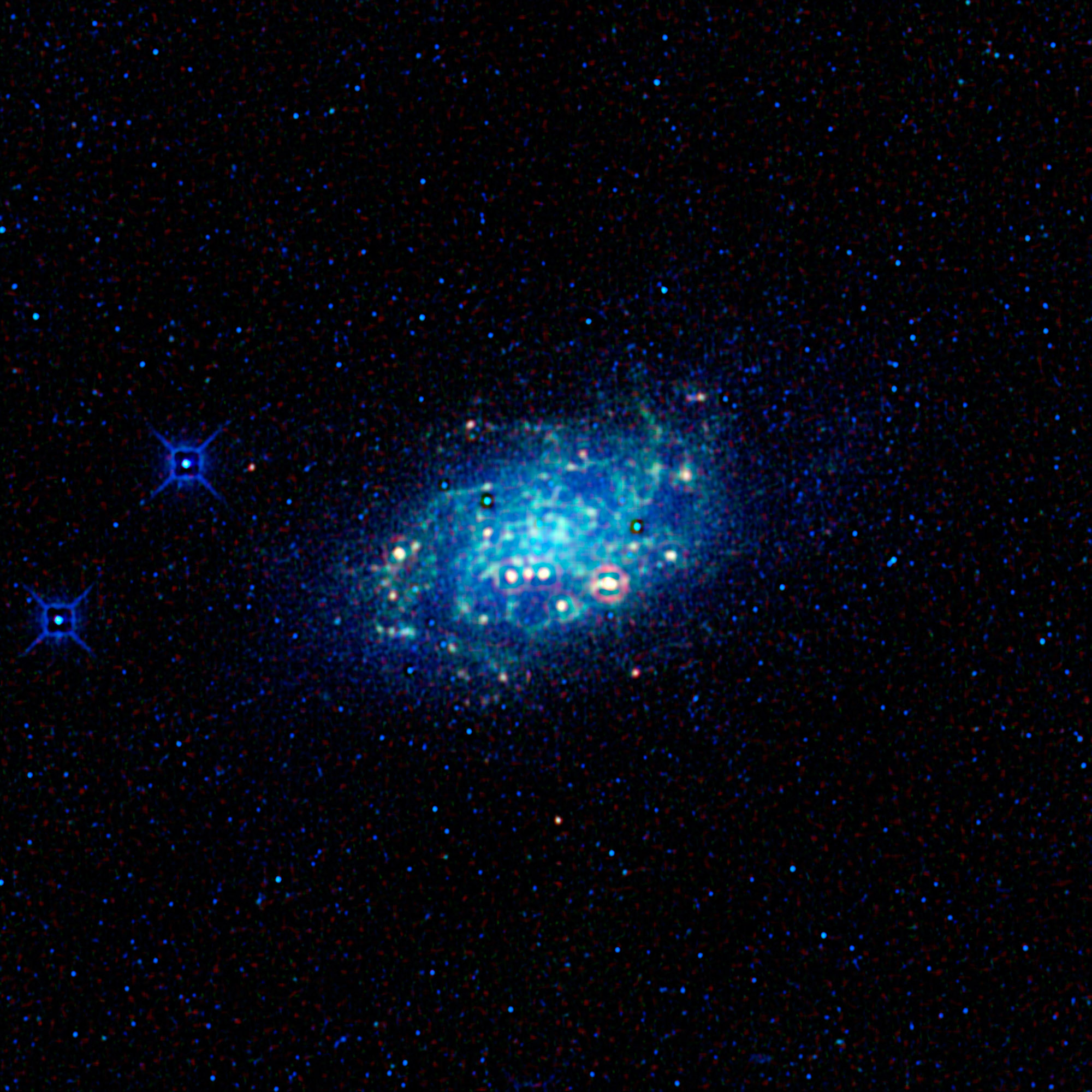
This fuzzy-looking galaxy is a flocculent, or patchy, spiral. It is largely veiled by gas and dust at visible-light wavelengths, but when viewed by NASA's WISE telescope, its arms are clearly revealed. In 2004, NGC 2403 was host to one of the largest supernova in recent decades (called SN 2004dj), which was first observed in 2004 in Japan and was visible for 8 months. NGC 2403 is located 11.4 million-light years away in the constellation Camelopardalis, and is about 73,000 light-years across.
Barnard's Galaxy, or IC 4895
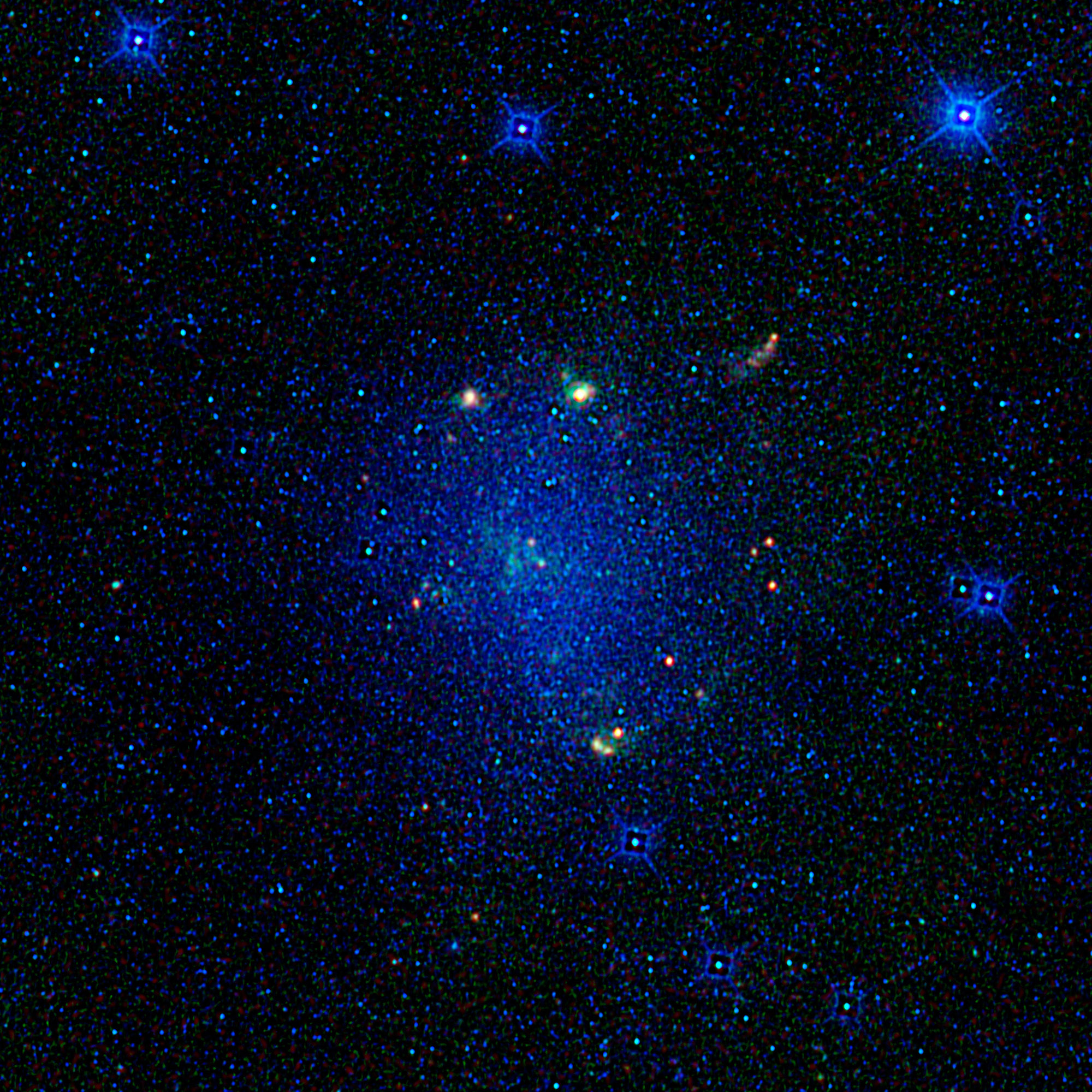
Barnard's Galaxy (also called IC4895 or NGC 6822) is known as a dwarf because its small size: It has only about 1 percent of the mass of the Milky Way. The galaxy's irregular shape is dominated by a central bar of stars, whose appearance resembles that of the nearby satellite galaxy, the Large Magellanic Cloud. It is therefore given a classification of "Magellanic type." The prominent yellow blobs seen against the blue stellar background are sites of recent star formation. Barnard's Galaxy is 1.6 million light-years away in the Sagittarius constellation, and is about 7,000 light-years across.
Hidden Galaxy, or IC342
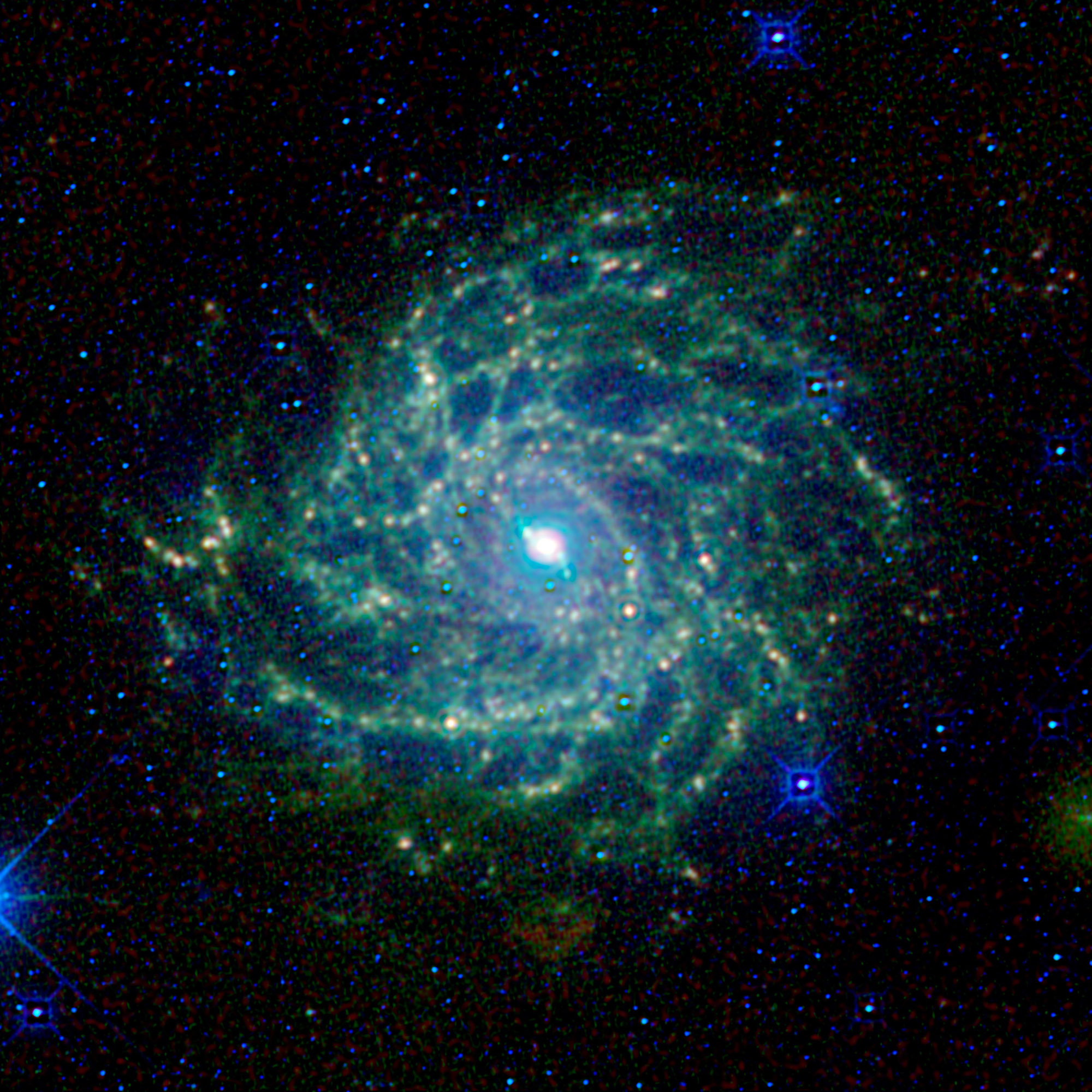
Sometimes called the Hidden Galaxy, this spiral beauty is shrouded behind our own galaxy, the Milky Way. Stargazers and professional astronomers have a hard time seeing the galaxy through the Milky Way's bright band of stars, dust and gas. WISE's infrared vision cuts through this veil, offering a crisp view. The nucleus is very bright at infrared wavelengths, due to a burst of new stars forming there. The Hidden Galaxy is located about 10 million light-years away in the constellation Camelopardalis, and is 62,000 light-years across.
Join our Space Forums to keep talking space on the latest missions, night sky and more! And if you have a news tip, correction or comment, let us know at: community@space.com.

Space.com is the premier source of space exploration, innovation and astronomy news, chronicling (and celebrating) humanity's ongoing expansion across the final frontier. Originally founded in 1999, Space.com is, and always has been, the passion of writers and editors who are space fans and also trained journalists. Our current news team consists of Editor-in-Chief Tariq Malik; Editor Hanneke Weitering, Senior Space Writer Mike Wall; Senior Writer Meghan Bartels; Senior Writer Chelsea Gohd, Senior Writer Tereza Pultarova and Staff Writer Alexander Cox, focusing on e-commerce. Senior Producer Steve Spaleta oversees our space videos, with Diana Whitcroft as our Social Media Editor.









